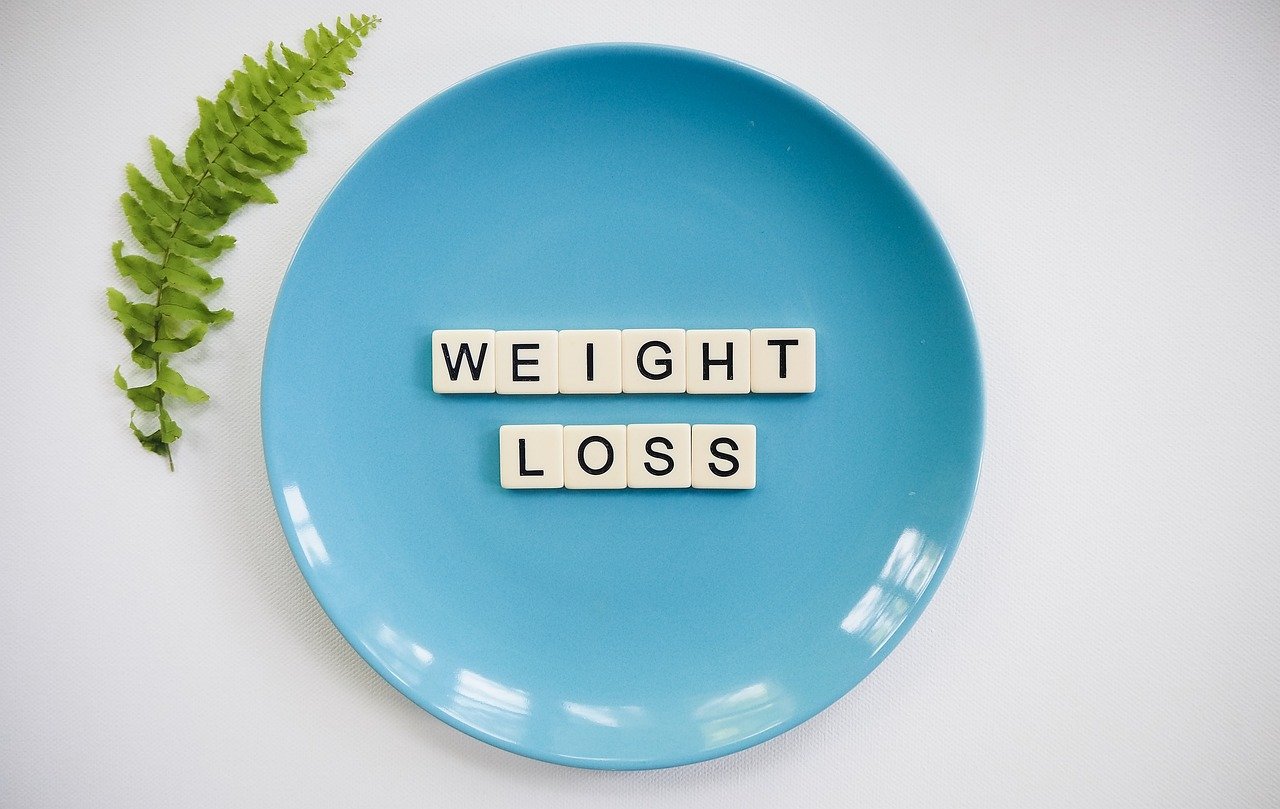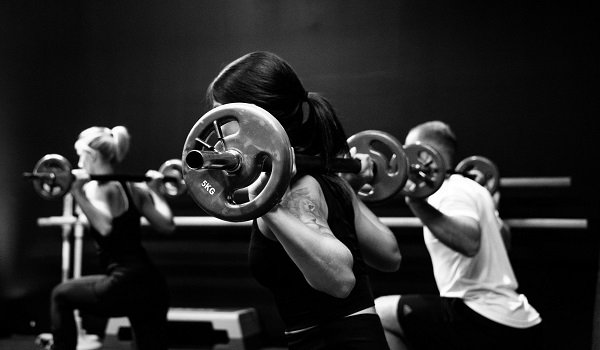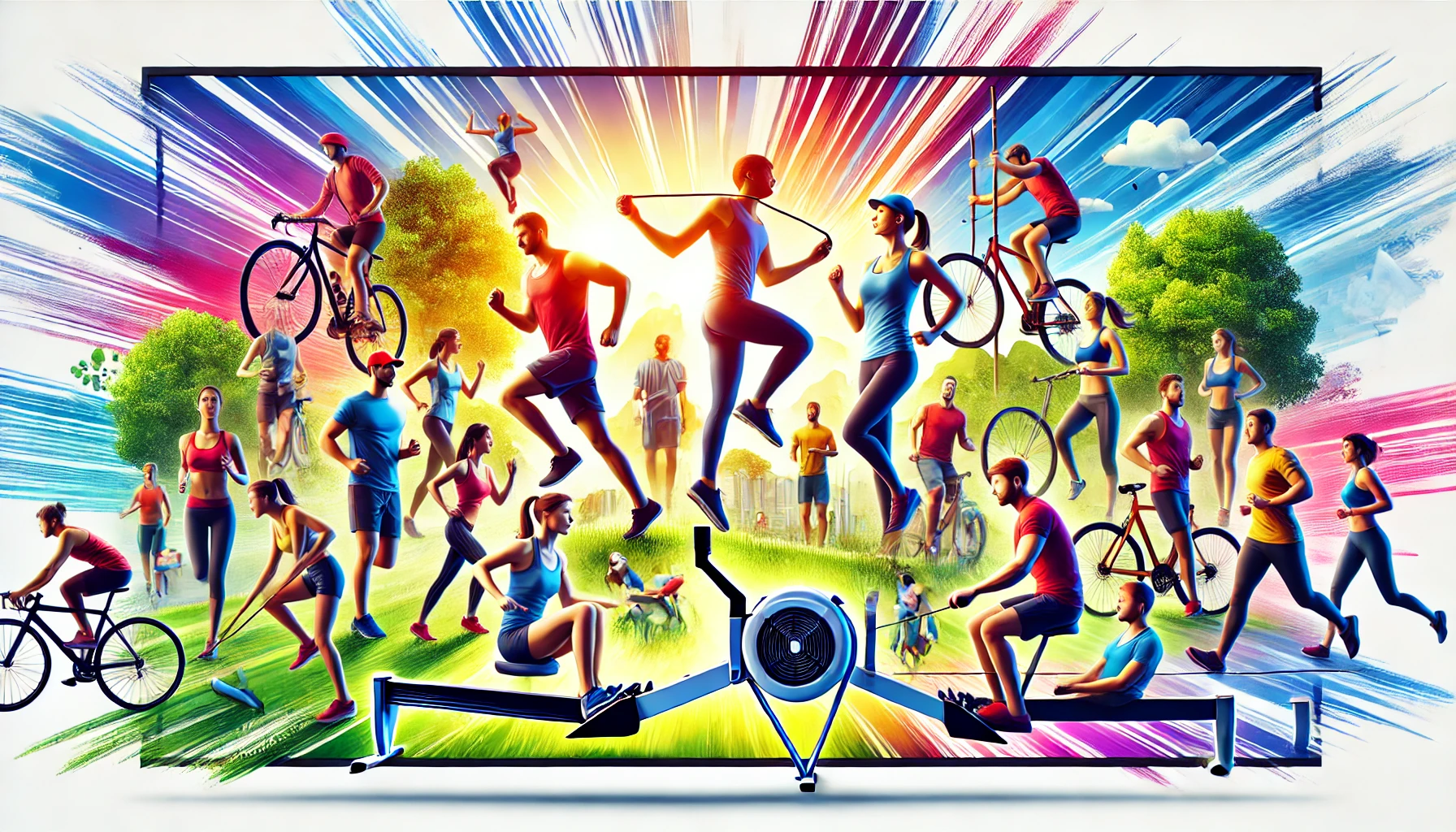The 4 Tools We Need To Lose Weight
Published On : 23rd Dec 2024

As the new year begins, many of us are determined to improve our health and shed some extra pounds. Ask most people what their New Year’s Resolutions were and you’ll likely find the answer- lose weight. With so many of us wanting to shed the pounds, why is the obesity pandemic reaching new heights? Weight loss tends to conjure up images of near starvation and tons of cardio. Most of us do not even start on our New Year’s Resolution simply because the thought of it stops us dead in our tracks. What if we had some tools for weight loss? 4 simple ideas that are practically guaranteed to shed fat, drop the weight, and slim us down? That would be a major first step towards a weight loss program.
Tool 1- Strength Training
Strength training is a game-changer when it comes to weight loss and overall health. It helps you build muscle, boost metabolism, and achieve a toned, lean physique. We have to recognize this as a viable fat-loss method. Every pound of muscle burns 35-50 calories per day. Adding lean muscle mass is the best way to jump start and sustain fat reduction.

- Why Strength Training is Essential for Weight Loss:
- Increases Metabolic Rate - Muscle burns more calories than fat, even at rest. The more muscle you build, the more calories you burn throughout the day.
- Prevents Muscle Loss - When losing weight, you risk losing muscle mass. Strength training ensures that most of your weight loss comes from fat, not muscle.
- Improves Body Composition - Helps sculpt your body and enhances strength while reducing fat.
- Boosts Long-Term Results - Strength training creates an "afterburn effect" (EPOC – excess post-exercise oxygen consumption), meaning your body continues burning calories after your workout.
- How to Incorporate Strength Training into Your Routine:
- Start Small - Begin with bodyweight exercises like squats, push-ups, and planks if you're a beginner.
- Add Resistance - Progress to using free weights, resistance bands, or machines as you build strength.
- Follow a Balanced Program - Target all major muscle groups: legs, back, chest, arms, shoulders, and core. Work out 2–4 times per week, allowing rest days for muscle recovery.
- Track Progress - Gradually increase weight, reps, or sets to challenge your muscles over time.
- Major Strength Training Workouts for Weight Loss:
- Beginner Circuit:
- 3 sets of 10 squats, push-ups, lunges, and dumbbell rows.
- Rest for 30 seconds between each exercise.
- Advanced Full-Body Workout:
- Deadlifts, bench presses, pull-ups, and weighted squats.
- Perform 4 sets of 8–12 reps.
Tool 2: Cardio
Cardio is one of the most effective tools for burning calories, improving heart health, and boosting endurance. It complements strength training perfectly, making it an essential part of any weight-loss journey. Cardio is good, but it’s not the only tool we should use. Cardio should be done as a partner to the other ideas. Anything that gets your heart pumping will do: walking, jogging, running, dancing, swimming, biking, or house cleaning.

- Why Cardio is Essential for Weight Loss:
- Burns Calories Quickly - Cardio is great for creating a calorie deficit, which is key to losing weight.
- Improves Heart Health - Strengthens your heart and lungs, reducing the risk of cardiovascular diseases.
- Boosts Endurance - Enhances stamina, making it easier to stay active throughout the day.
- Reduces Stress - Activities like running or cycling release endorphins, which improve mood and motivation.
- Versatility - You can do it almost anywhere, and it includes a variety of activities to suit your preferences.
- How to Incorporate Cardio into Your Routine:
- Choose Activities You Enjoy - Running, cycling, swimming, dancing, hiking, or even brisk walking count as cardio.
- Mix Intensities:
- Low-Intensity Steady State (LISS) - Longer sessions at a steady pace (e.g., a 45-minute walk). Ideal for beginners or recovery days.
- High-Intensity Interval Training (HIIT) - Short bursts of high-intensity effort followed by rest (e.g., sprinting for 30 seconds, walking for 1 minute). HIIT is highly effective for burning fat in less time.
- Set a Schedule - Aim for 150–300 minutes of moderate cardio or 75–150 minutes of vigorous cardio weekly.
- Cardio Workouts for Weight Loss:
- Beginner Routine:
- Brisk walk or light jog for 30 minutes, 3–5 times a week.
- Intermediate Routine:
- 20-minute cycling session with alternating 2 minutes of moderate effort and 1 minute of high effort.
- Advanced HIIT Routine:
- 10 rounds of - 30 seconds of sprinting, 1-minute walk or slow jog.
Tool 3- Nutrition
Nutrition is often the hardest part of the weight loss process. We simply forgot how to eat well in our culture. We need to eat protein, carbs, and fat to sustain our way of life. Cut one of the three out and imbalances will occur. Nutrition is one of the most critical components in weight loss. Proper nutrition helps to fuel your body, control hunger, and ensure you are getting the right nutrients.

- Why Nutrition is Essential for Weight Loss: Nutrition is essential for weight loss because it helps you control calorie intake, boost metabolism, and manage hunger. By choosing nutrient-dense foods (like vegetables, lean proteins, and whole grains), you can stay full, maintain muscle mass, and avoid overeating. Proper nutrition also supports hormonal balance, provides steady energy, and prevents nutrient deficiencies, ensuring your body functions well while losing weight. In short, the right nutrition creates a sustainable path to weight loss and long-term health.
- How to Incorporate Nutrition into Your Routine: Incorporating nutrition into your routine is key for sustainable weight loss and overall health. Here are some practical tips to make healthy nutrition a consistent part of your daily life:
- Meal Prep - Plan and prepare meals ahead to control portions and ensure healthy options.
- Track Your Food - Use a food journal or app to monitor intake and stay mindful of your eating.
- Healthy Breakfast - Start with protein and fiber (e.g., eggs, oats) to stay full and energized.
- Portion Control - Use smaller plates and listen to your body's hunger cues.
- Healthy Snacks - Keep nutritious snacks like fruits, nuts, and veggies available.
- Stay Hydrated - Drink water throughout the day and limit sugary drinks.
- Cook at Home - Prepare meals to control ingredients and portion sizes.
- Balance Your Plate - Include lean proteins, complex carbs, and healthy fats.
- Don’t Skip Meals - Eat regular meals to prevent overeating later.
Tool 4- Rest
Rest is crucial for weight loss and overall health. Proper rest allows your body to recover, repair, and regulate important functions that support your fitness and nutrition efforts. Rest is not a luxury. It is a necessity. We should eat well every day and we should workout 5-6 times per week. The leftover 1-2 days are meant for rest. Our muscles need time to rebuild and repair themselves.

- Why Rest is Essential for Weight Loss: Rest is essential for weight loss because it directly affects your body’s ability to recover, regulate hormones, and manage energy.
- Muscle Recovery - Rest helps muscles repair and grow, boosting metabolism.
- Hormonal Balance - Adequate sleep regulates hunger hormones, reducing overeating.
- Improved Metabolism - Sleep supports fat-burning and prevents metabolic slowdown.
- Reduced Stress - Rest lowers cortisol levels, preventing fat storage.
- Increased Energy - Proper rest restores energy, making you more active and motivated.
- Better Decisions - Rest improves focus, helping you make healthier food choices.
- Stronger Immunity - Rest keeps your immune system strong, preventing illness.
Rest is key for regulating hormones, boosting metabolism, and maintaining energy for effective weight loss.
- How to Incorporate Rest into Your Routine: Incorporating rest into your routine is essential for weight loss and overall well-being. Here are some tips to ensure you're getting the right amount of rest:
- Prioritize Sleep - Aim for 7-9 hours of sleep each night to allow your body to recover and recharge.
- Set a Consistent Sleep Schedule - Go to bed and wake up at the same time every day, even on weekends, to regulate your body’s internal clock.
- Create a Relaxing Bedtime Routine - Wind down with calming activities like reading, meditation, or gentle stretches to prepare your body for sleep.
- Take Regular Rest Days - nclude rest days in your exercise routine to prevent overtraining and allow muscles to recover.
- Practice Relaxation Techniques - Use deep breathing, mindfulness, or yoga to reduce stress and promote relaxation, helping you sleep better.
- Listen to Your Body - Pay attention to signs of fatigue and take breaks or naps if needed to recharge throughout the day.
Using strength training, cardio, nutrition and rest to our advantage will result in fat loss. There is no magic bullet. Just simple and effective tools to create the body we want. Make a promise to yourself right now. Try using the above tools consistently and to the best of your ability for 4 weeks. You’ll look great and feel amazing.




